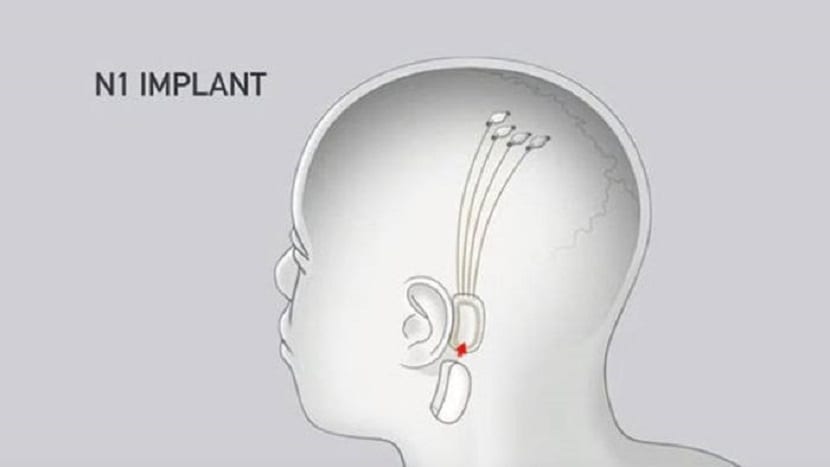
As expected, the Elon Musk's Neuralink has shed light on his activities of brain-computer interface. The firm announces that conclusive tests have been carried out on animals.
During the live webcast of the conference, Musk returned to his fear of seeing humans supplanted by artificial intelligence. Without departing from his usual purpose, he again declared that only the establishment of a brain-computer interface can allow humans to subsist.
Elon Musk went back to the two main barriers to achieve this goal: information accuracy and performance. Defects exhibited by existing solutions in the industry.
About Neuralink
In response to existing limitations, the first advance (according to Neuralink) It is based on the use of flexible cables thinner than a hair (4 to 6 micrometers).
The sets of wires lead on one side to sensors that measure the electrical activity of neurons (6 wires for 192 measuring electrodes) and the other to a data processing unit thin enough to be able to place a dozen under the skin .
According to the company, These cable connections will contribute to an increase in data transmission speed. For their insertion, the company uses a neurosurgery robot designed to install them without damaging the brain.
In the future, Neuralink teams will try to use a laser beam to cross the skull, instead of drilling holes.
To mitigate surrounding tissue formation and therefore attenuation, Information chain processing includes a chip that reads, cleans, and amplifies signals from the brain.
Installation of the device requires the drilling of four 8mm holes in the skull. This can be seen in the video.
This interface to the neural network connects wirelessly to a pod. The maneuver is intended to prevent the leads from exiting the skull.
“The interface to the chip is wireless, so you have no wires coming out of your head. It's basically how you use Bluetooth on your phone, "Musk said.
With its first official launch, the company took the opportunity to announce the availability of an application to help the first users in handling the interface.
The Neuralink approach has been tested in rodents and monkeys. According to the firm, almost twenty have been carried out successfully.
"A monkey was able to control a computer through his thinking," Musk said at the end of the question and answer session that followed the presentation.
Neuralink will now have to go after an authorization from the United States Food and Drug Administration (FDA).
This is the stage that, according to the company's developments, conditions the first tests on humans.
Of course, it will be necessary to find third parties willing to lend themselves to the experiment. Here, we talk about the insertion of foreign bodies into the brain, which probably causes more than one to retract.
The device is at first glance more interesting for people with diseases. This is one of the objectives of configuring this interface: to put its technology at the service of paralyzed people who could then use connected objects.
They will be able to enter text just by thinking about it, move the cursor, browse web pages. The company even anticipates that, in the distant future, third parties may download a new language into their brain or exchange ideas as a series of 1s and 0s.
However, Neuralink focuses its current developments on helping people with paralysis.
Neuralink's approach follows the so-called BrainGate. The latter has already enabled people with disabilities to control objects connected by thought.
13 years ago, this happened with the Nagle case in a New York Times publication. The main contribution of the Neuralink system compared to the existing one would be the lower degree of intrusion of the method to measure the electrical activity of the neural network in the brain.